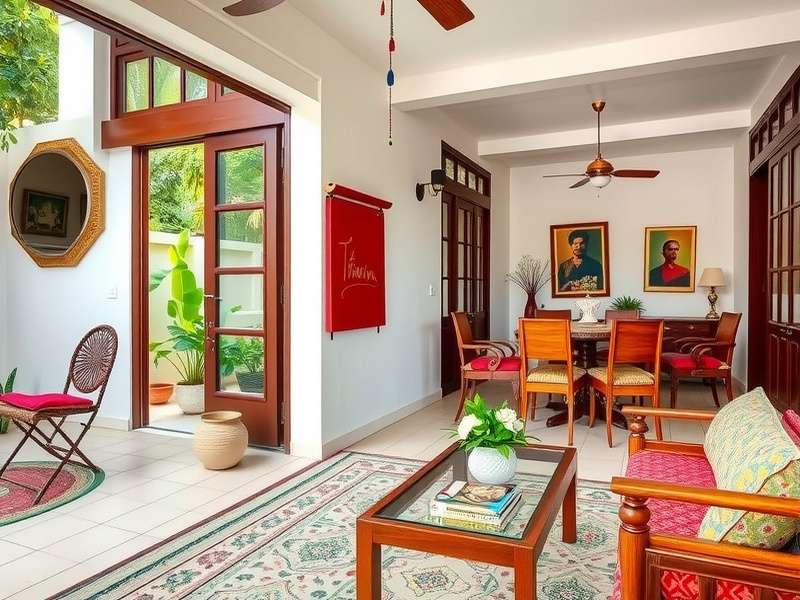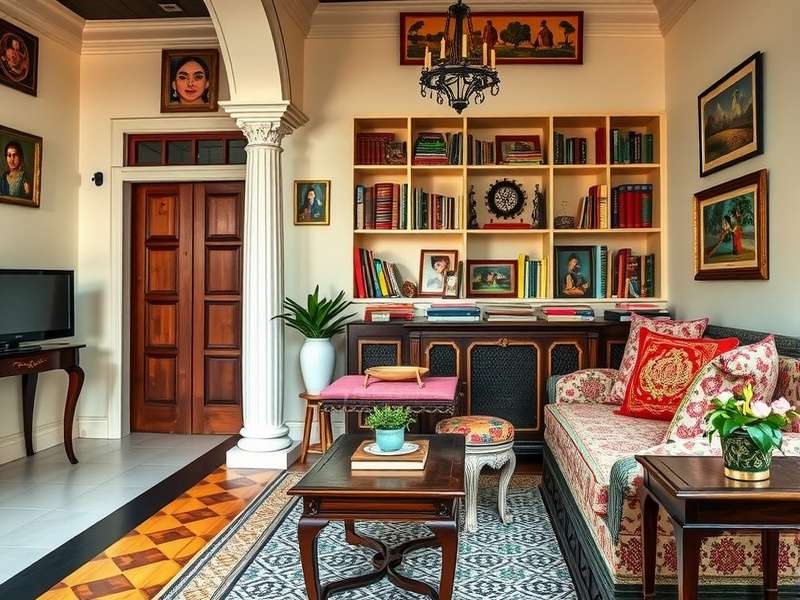Bengal Bungalow Makeover: Complete Transformation Guide 🏡
Bengal Bungalow Makeoverrepresents the art of transforming traditional Indian homes into modern, functional living spaces while preserving their cultural essence and architectural heritage.
The concept ofBengal Bungalow Makeoverhas gained tremendous popularity in recent years as homeowners seek to blend traditional aesthetics with contemporary comforts. This comprehensive approach to home renovation focuses on revitalizing the classic bungalow architecture commonly found across Bengal and Eastern India.
These charming structures, often dating back to the colonial era, possess unique architectural elements that modern homeowners are now rediscovering and incorporating into their living spaces. TheBengal Bungalow Makeoverprocess involves careful planning, respectful restoration, and innovative design solutions.

What sets apart a successfulBengal Bungalow Makeoveris the delicate balance between preservation and innovation. Homeowners and designers must work together to maintain the building's historical integrity while introducing modern amenities that enhance livability.
The resurgence of interest in these architectural gems reflects a broader cultural movement toward sustainable living and appreciation for heritage craftsmanship. Unlike generic modern constructions, bungalows transformed through theBengal Bungalow Makeoverapproach offer character, history, and a unique sense of place.
Key Features of Bengal Bungalow Makeover ✨
A successfulBengal Bungalow Makeoverincorporates several distinctive elements that honor the original architecture while meeting contemporary needs. Understanding these features is essential for anyone considering such a transformation project.
Verandahs and Porches
The classic wrap-around verandah is a signature element of Bengal bungalows. These spacious outdoor areas serve as transitional spaces between the interior and exterior, providing shaded areas for relaxation and social gatherings.
High Ceilings and Ventilation
Traditional bungalows feature exceptionally high ceilings that promote natural air circulation, keeping interiors cool during hot summer months. This passive cooling technique remains highly relevant in today's energy-conscious world.
Connection to Nature
Bengal bungalows typically feature large windows and doors that frame garden views, creating a strong indoor-outdoor connection. This biophilic design approach enhances wellbeing and brings natural light deep into living spaces.
Original Architectural Details
From intricate moldings to decorative brackets and original flooring, preserving these unique details is crucial in anyBengal Bungalow Makeover. These elements tell the story of the building's history and craftsmanship.
Flexible Room Layouts
The traditional bungalow layout often features rooms that flow seamlessly into one another, allowing for flexible use of space. Modern makeovers enhance this flexibility while creating defined zones for different activities.
Material Authenticity
Using locally sourced materials like terracotta, wood, and stone maintains the authentic character of the bungalow while supporting sustainable building practices and local economies.

Design Elements and Aesthetic Considerations 🎨
The visual transformation in aBengal Bungalow Makeoverrequires careful consideration of color palettes, materials, furniture selection, and decorative elements that honor the past while embracing the present.
Color Schemes and Palettes
Traditional Bengal bungalows often featured earthy tones derived from natural pigments. Modern interpretations might expand this palette while maintaining connection to regional color traditions. Whites, creams, and pale yellows provide neutral backdrops that highlight architectural details.
Accent colors drawn from Bengali culture—such as vibrant reds from traditional sarees, deep blues reminiscent of indigo dye, and greens inspired by the lush landscape—can be strategically incorporated to create visual interest and cultural resonance.
Furniture and Furnishings
Selecting appropriate furniture involves balancing antique pieces with contemporary comforts. Traditional wooden furniture with intricate carvings can be mixed with simpler modern pieces to create eclectic, personalized spaces.
Upholstery fabrics might include traditional handloom textiles like jamdani and kantha, which add texture and cultural significance while supporting local artisans and sustainable production methods.
Design Tip:When undertaking aBengal Bungalow Makeover, create a mood board that includes historical references, color swatches, material samples, and inspirational images to maintain design consistency throughout the project.
Lighting Design
Lighting plays a crucial role in highlighting architectural features and creating ambiance. A layered lighting approach combines general illumination with task lighting and accent lights to enhance the bungalow's character after dark.
Traditional elements like hanging pendant lights can be reinterpreted with contemporary designs that reference historical forms while providing improved energy efficiency and light quality.

The Bengal Bungalow Makeover Process 🔄
Transforming a traditional bungalow requires a systematic approach that respects the original structure while implementing necessary updates. TheBengal Bungalow Makeoverprocess typically follows these key stages.
Initial Assessment and Planning
Every successfulBengal Bungalow Makeoverbegins with a thorough assessment of the existing structure. This involves evaluating the building's condition, identifying original features worth preserving, and understanding the spatial relationships that define the bungalow's character.
During this phase, homeowners should clarify their needs, lifestyle requirements, and budget constraints. Creating a detailed brief helps align expectations between homeowners, architects, and contractors before work begins.
Structural Considerations and Updates
Many older bungalows require structural reinforcement to meet modern safety standards. This might include foundation repairs, roof restructuring, or updating electrical and plumbing systems hidden within walls and floors.
When making structural changes, the goal is to minimize visual impact on historical elements while ensuring the home can comfortably accommodate contemporary living for decades to come.
Expert Insight:The most successfulBengal Bungalow Makeoverprojects work with the existing architecture rather than against it. This approach preserves the soul of the home while making it functionally relevant for modern families.
Material Selection and Sourcing
Choosing appropriate materials is crucial for maintaining authenticity while ensuring durability. Where original materials cannot be salvaged, sourcing matching or complementary alternatives becomes essential.
Reclaimed wood, reproduction moldings, and traditional flooring materials help maintain historical continuity while providing the performance expected in contemporary homes.
Implementation and Finishing
The implementation phase brings together all planning and preparation into physical transformation. Skilled craftspeople play a vital role in this stage, executing detailed work that honors traditional techniques while meeting modern standards.
Finishing touches—from paint colors to hardware selection—ultimately determine how successfully theBengal Bungalow Makeoverbalances historical authenticity with contemporary comfort and style.
Benefits of Bengal Bungalow Makeover 🌟
Choosing to transform rather than replace a traditional bungalow offers numerous advantages that extend beyond aesthetic appeal to encompass environmental, financial, and cultural benefits.
Sustainability and Environmental Impact
Renovating existing structures represents one of the most sustainable approaches to housing. TheBengal Bungalow Makeoverconserves embodied energy—the energy already invested in existing materials and construction—while reducing waste sent to landfills.
Traditional bungalow designs often incorporate passive cooling techniques that reduce reliance on mechanical air conditioning, lowering energy consumption and utility costs while minimizing environmental impact.
Cultural Preservation and Identity
Each transformed bungalow becomes a living repository of regional architectural history, preserving craftsmanship techniques and design approaches that might otherwise disappear. This cultural continuity strengthens community identity and connection to place.
By maintaining visual connections to the past,Bengal Bungalow Makeoverprojects help new generations appreciate architectural heritage while adapting these spaces for contemporary use.
Community Impact:The growing popularity ofBengal Bungalow Makeoverinitiatives has stimulated local economies by creating demand for traditional craftsmanship and building techniques that were previously declining.
Financial Considerations
While renovation costs can be significant, they often compare favorably to new construction, particularly when considering the value of preserved historical elements and prime locations typically associated with older bungalows.
Well-executedBengal Bungalow Makeoverprojects typically yield strong returns on investment, as these character-rich properties remain highly desirable in the real estate market.
Quality of Life Enhancements
The spacious rooms, high ceilings, and connection to outdoor spaces characteristic of bungalows contribute significantly to resident wellbeing. These features promote natural light, ventilation, and a sense of spaciousness that enhances daily living.
The unique character of a transformed bungalow—with its history, craftsmanship, and architectural details—creates a living environment that standard new construction rarely matches, providing daily inspiration and connection to heritage.
Historical Context and Evolution 📜
The Bengal bungalow style emerged during the British colonial period, blending European architectural influences with local building traditions and climate-responsive design. Originally designed as single-story residences with surrounding verandahs, these structures represented a distinct architectural type suited to the Bengal climate.
Over decades, these bungalows evolved, incorporating elements from Art Deco, Modernist, and other architectural movements while maintaining their essential character. The contemporaryBengal Bungalow Makeovermovement represents the latest chapter in this evolutionary story.
Understanding this historical context enriches the renovation process, helping homeowners and designers make informed decisions that respect the building's lineage while ensuring its continued relevance.
The preservation and transformation of these architectural treasures represents an important cultural conservation effort, safeguarding tangible connections to regional history while adapting them for future generations.
Regional Variations and Adaptations 🗺️
While sharing common characteristics, Bengal bungalows display regional variations reflecting local materials, craftsmanship traditions, and microclimates. Understanding these differences informs appropriate approaches to theBengal Bungalow Makeoverprocess.
Urban bungalows in Kolkata often feature more formal architectural details and constrained sites, while rural examples might incorporate more vernacular elements and expansive gardens. Each context requires tailored solutions that respect local character.
Coastal adaptations might include additional weatherproofing and ventilation strategies, while upland variations could incorporate different materials and orientation approaches responsive to their specific environmental conditions.
These regional distinctions enrich the architectural landscape and provide valuable lessons in climate-responsive design that remain relevant to contemporary sustainable building practices.
Future Trends and Innovations 🔮
The future ofBengal Bungalow Makeoverlies in increasingly sophisticated integrations of historical preservation and cutting-edge technology. Smart home systems discreetly incorporated into traditional settings represent one emerging trend.
Energy efficiency upgrades—from solar panels to advanced insulation—are becoming standard considerations, reducing environmental impact while maintaining aesthetic integrity. These improvements align the comfort and performance of historic homes with contemporary expectations.
As appreciation for sustainable living grows, the inherent green qualities of traditional bungalow design are being rediscovered and enhanced, positioning theBengal Bungalow Makeoveras both a preservation and sustainability strategy.
The ongoing evolution of these transformation approaches ensures that Bengal's architectural heritage will continue to inspire and shelter future generations while adapting to changing needs and technologies.